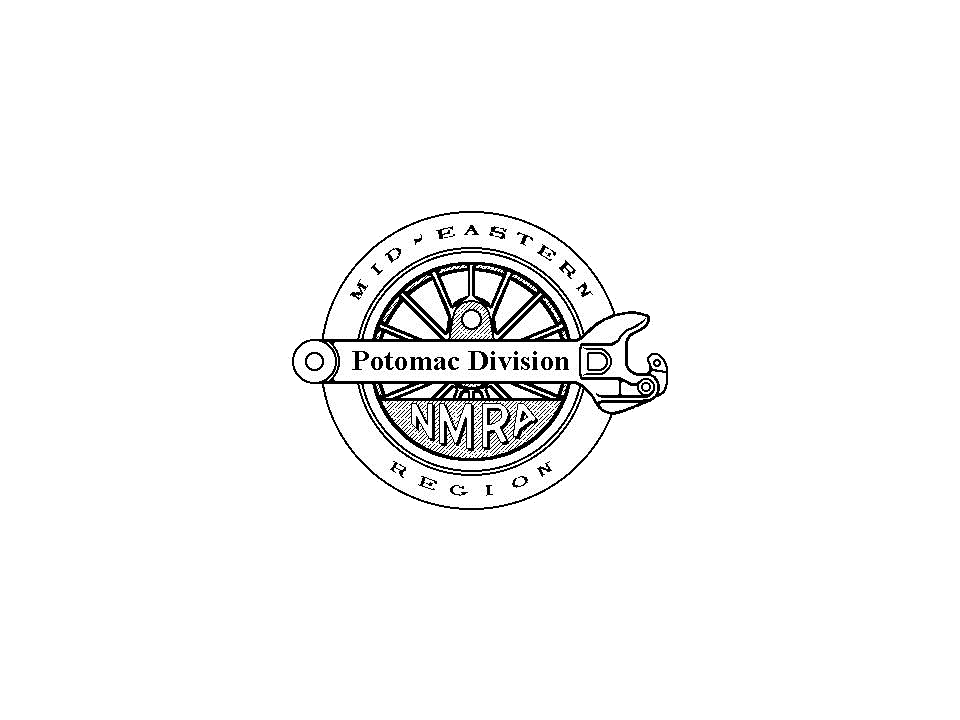A REALLY
BIG MODEL RAILROAD
The first
time I saw Jim Brewer’s layout in Glenwood, Maryland several years ago,
I found it impossible not to be captivated by his HO scale replica of
the old N&W Shenandoah Valley Division. The sheer massiveness
of a 93’ by 30’ room, larger than some club layouts, hits you first
before you even realize that there is an additional room about 24’ by
20’, in itself larger than many of us have in which to fit our entire
model railroad. Then when you finally return to reality, you begin to
appreciate what Jim and his crew have actually accomplished. Running
south from Hagerstown down the valley to Roanoke, the N&W
Shenandoah Valley Division (now NS) was one those prototype situations
that was virtually begging to be modeled. Long stretches of relatively
tangent single track running through the gentle, rolling hills of the
beautiful rural Virginia countryside with its farms, quaint villages,
and small towns along the river; extended passing sidings to
accommodate long freight trains hauled by enormous, home built, steam
power; passenger varnish behind streamlined Class J’s and K’s, all of
which persisted into the late 1950’s until those store bought diesels
finally took over. The setting is 1956, the transition time between the
old and new motive power. The only downside was (is) that you really do
need a sizable area to make such a railroad look right, and
Jim Brewer, unlike most of us, has it to spare. I was especially
intrigued because of the propensity of model railroaders to fill as
much of the available space as possible with trains, track work, and
pertinent railroad structures to the detriment of forests, fields,
etc., things more often found in a rural setting. I have attempted a
similar what I like to call the “less is more” approach with my own
railroad but with a much smaller area in which to work.
This
time around, it was every bit as well done as I remember it from my
first visit, if not more so. Most of the scenery has been finished on
the completed portion of the railroad that starts at Front Royal and an
interchange with the Southern and will eventually end at a new section
representing Waynesboro and an interchange with the C&O
east-west mainline that is currently under construction. On this
particular day, a sound equipped BLI N&W class A was lazily
chugging around with a train of 20 some N&W hopper cars. The
thing about a single track model railroad, even one as large as this
one, is that running more than one train at a time requires someone to
be there who’s paying attention. I know this from personal experience
because I have a single track railroad myself and I’m not always alert
to the locations of the trains; it’s much easier to put on one train
and let it run unattended as long as it’s reliable. The bench work
averages about 42 inches high all the way around (no hills in this
valley) with L-girder and open grid supporting 3/4 inch plywood with
code 100 flex track on Homabed. Turnouts are Shinohara with either
hand-throws or Tortoise slow motion switch
machines.
As
is usually the case, it’s the small details that make the railroad and
this railroad could set the bar on how to do it without overdoing it;
although I’m not all that familiar with the area, standing in that room
makes you feel like you’re standing in the Shenandoah Valley. All of
the stations are scratch built to replicate the prototypes, as are
several of the larger on line industries. But there are also many
commercially available structures to create local businesses for the
small towns along the line and stock ME Viaducts and CV bridges over
the myriad creeks and tributaries running into the namesake river.
Appropriate signage advertising the products of the day are
interspersed in logical positions to be seen by travelers on the local
roads driving vintage appropriate vehicles (a ’56 Chevy comes to mind),
and there’s one prominent roadside sign as you enter Luray advertising
the famous caverns which looks exactly like the original as I recall it
from a family visit there many years ago. There’s even a chain link
security fence topped with triple stranded barbed wire around the soon
to be completed Mercke Pharmaceutical complex and sections of telephone
poles fully strung with wires. One of the rivers was so well done that
I was forced to poke at it to prove to myself that the water wasn’t
real. Elkton, for example, had a cornfield, a vegetable garden, and a
full sized softball field (60 foot baselines) with the standard 10
players at their defensive positions in the game. When you have 3300
square feet to work in, you don’t have to contend with situations that
require “selective compression” or any other kind of compression for
that matter. And then there are the trees - many, many trees - in
various shapes, sizes, and shades of green; apparently it’s not yet
autumn, in the Shenandoah anyway. Finally, there are several scenes on
the layout that are based on photos in O. Winston Link’s book of night
photography on the line, and copies of the pictures were attached to
bench work where those scenes are reenacted on the model.
When
I write up home model railroad tours, professional meetings, or
anything else, I try to focus on the highlights of the event for those
who were unable to be there that day. But there’s no way one can do
justice to a railroad like this with the written word. Pictures would
certainly enhance your experience in such circumstances far more than
writing alone can do, but nothing will adequately substitute for seeing
it yourself. The next time an opportunity arises to visit Jim Brewer’s
layout, do your best to take advantage of it.
Bob
Rosenberg

